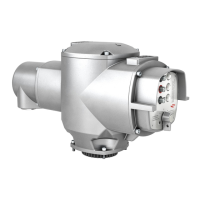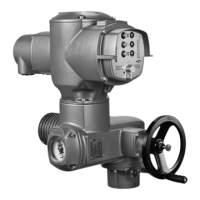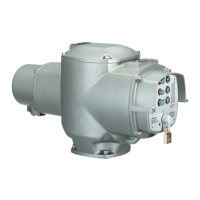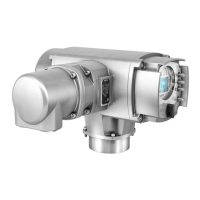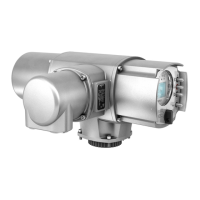Actuator controls AUMATIC AC 01.1 / ACExC 01.1
Operation instructions DeviceNet
11
4) Requires position transmitter in the actuator
5) Requires magnetic limit and torque transmitter (MWG) in actuator
Further options for Non-intrusive version with MWG in the actuator
Setting of limit and torque switching via local controls
Electronic timer Start and end of stepping mode as well as ON and OFF time (1 up to 300 seconds) can be
programmed individually for the directions OPEN and CLOSE.
Intermediate positions Any 8 intermediate positions between 0 and 100 %
Reaction and signal behaviour programmable
Further options for version with potentiometer or RWG in the actuator
Electronic timer Start and end of stepping mode as well as ON and OFF time (1 up to 300 seconds) can be
programmed individually for the directions OPEN and CLOSE.
Intermediate positions Any 8 intermediate positions between 0 and 100 %
Reaction and signal behaviour programmable
Settings/programming of the DeviceNet interface
Setting of the baud rate Supported baud rates: 125 kbit / 250 kbit / 500 kbit
Automatic baud rate recognition or setting of the baud rate via Explicit Messages or via the
local controls of the AUMATIC as an alternative
Setting of the DeviceNet address
(MAC ID)
Setting of the address via Explicit Messages or via the display of the AUMATIC
Programming via DeviceNet via EDS file and DeviceNet configuration software (e.g. RSNetWorx)
Programmable process
representation
The AUMATIC is capable of exchanging data with the process control system by using
different assembly objects:
Input data: Standard Input, Extended Input, Extended one analogue Input,
(Produced Data) Extended two analogue Input, Enhanced Input,
Process Input Data 1, Process Input Data 2, Process Input Data 3
Output data: Standard Output, Process Output Data 1
(Consumed Data)
Depending on the configuration, the length and content of the data interface changes. The
configuration is set in the factory and may be changed via the local controls of the
AUMATIC or via Explicit Messages with the parameters Selected Produced Connection
Path or Selected Consumed Connection Path respectively.
Commands and signals of the DeviceNet interface
Process representation output
(command signals)
OPEN, STOP, CLOSE, nominal position value
4)
, RESET
Process representation input
(feedback)
End position OPEN, CLOSED
Actual position value
4)
Actual torque value
5)
Selector switch in position LOCAL/ REMOTE
Running indication
4)
(directional)
Torque switch OPEN, CLOSED
Limit switch OPEN, CLOSED
Manual operation by handwheel
4)
or local controls
Analogue (2) and digital (4) customer inputs
Process representation input
(fault signals)
Motor protection tripped
Torque switch tripped in mid-travel
One phase missing
Loss of the analogue customer inputs
Behaviour on loss of
communication
The behaviour of the actuator is programmable:
- stop in current position
- move to end position OPEN or CLOSED
- move to any intermediate position
4)
General data DeviceNet
Communication protocol DeviceNet according to EN 50325-2 or IEC 62026-3
Network topology Topology with one trunk line and optional drop lines.
Coupling and uncoupling of devices during operation without affecting other devices is
possible
DeviceNet voltage supply and DeviceNet data signals in one cable.
Transmission medium Twisted, screened copper cable with one wire pair for signal transmission and one wire pair
for the DeviceNet voltage supply
DeviceNet current consumption approx. 30 mA at + 24 V DC (approx. 50 mA at + 11 V DC)
DeviceNet interface Based on data transmission via CAN telegrams
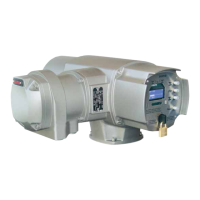
